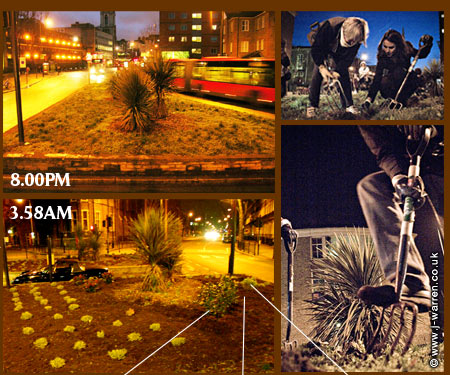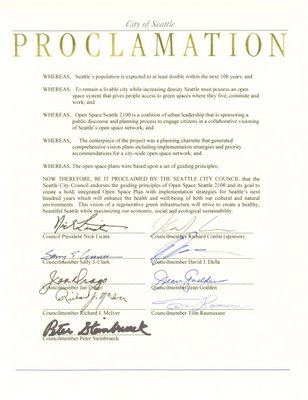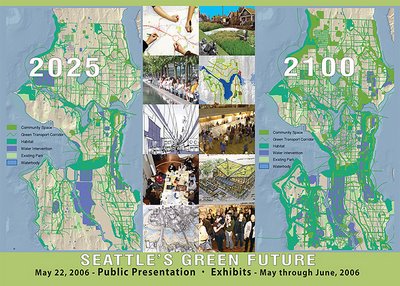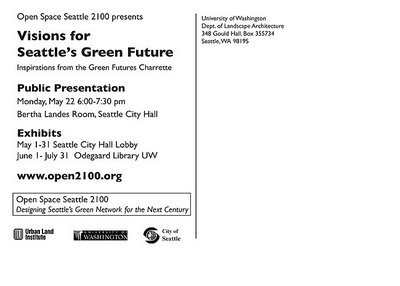After the OSS 2100 presentation at City Hall, our friends over at the
People's Waterfront Coalition (not an endorsement, just that they are, in fact, friends) will be hosting an event at
Town Hall. It starts at 7:30 and is just a short walk away from City Hall. We suggest you come and hear what these speakers have to say.
Here's the information from Cary over at PWC:
John Norquist, director of the Congress for the New Urbanism, and Scott Bernstein, president of the Center for Neighborhood Technology, are coming to Seattle May 22 and 23. Their two organizations are doing a national study of the economic and civic benefits of tearing down urban highways and replacing them with surface streets, and their study includes analysis of Seattle's viaduct removal / replacement situation. City Council is hosting a brown bag lunch discussion at noon on the 23rd, and the People's Waterfront Coalition and Transportation Choices Coalition are organizing an evening roundtable discussion with them at Town Hall the evening of May 22 7:30 to 9:00 pm.
David Brewster will moderate the roundtable discussion event. We've invited Anne Vernez Moudon from UW to be on the panel, and Denis Hayes from the Bullitt Foundation and Green Ribbon Commission. If they can't, we have some other great possible panelists to invite. The format is presentation by Scott and John, then moderated discussion, then questions from the audience.
John and Scott give a great presentation about successful urban streets, mobility in cities, and make some very interesting arguments about how highways are a rural model that doesn't fit well with city grids. As the Mayor of Milwaukee, John led that city to remove a waterfront elevated highway, and they're now beginning to reap significant economic and civic benefits. Scott has been a hero in the world of preventing sprawl and offering smart alternatives to highways for decades. He was a co-founder of the Surface Transportation Policy Project, was on Clinton's President's Council for Sustainable Development, and is a board member for the Brookings Institute Center for Urban and Metropolitan Policy. They have already done economic and case study traffic analysis which is all turning out in favor of our Transit + Streets proposal (surprise!) and are ready to start sharing their knowledge.









